What is Hoi An Silk Village?
Hoi An Silk Village is a purpose-built complex that blends museum displays, working silk workshops, and a boutique into one visitor-friendly site. The experience walks you through each stage of traditional silk production — from growing mulberry trees and raising silkworms to reeling, dyeing, and weaving silk by hand on wooden looms.
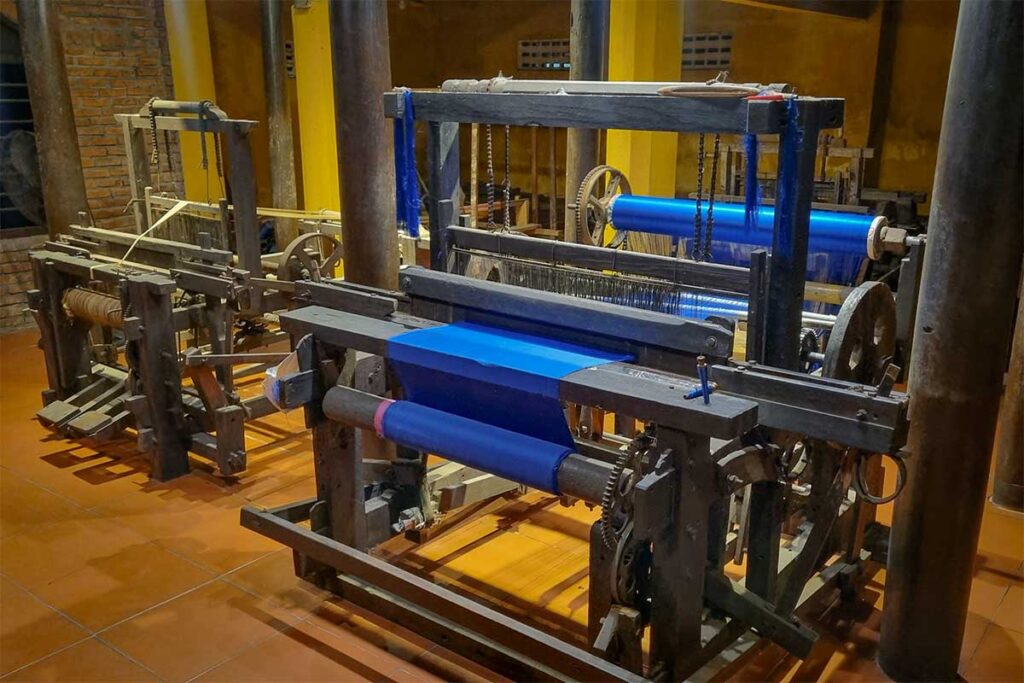
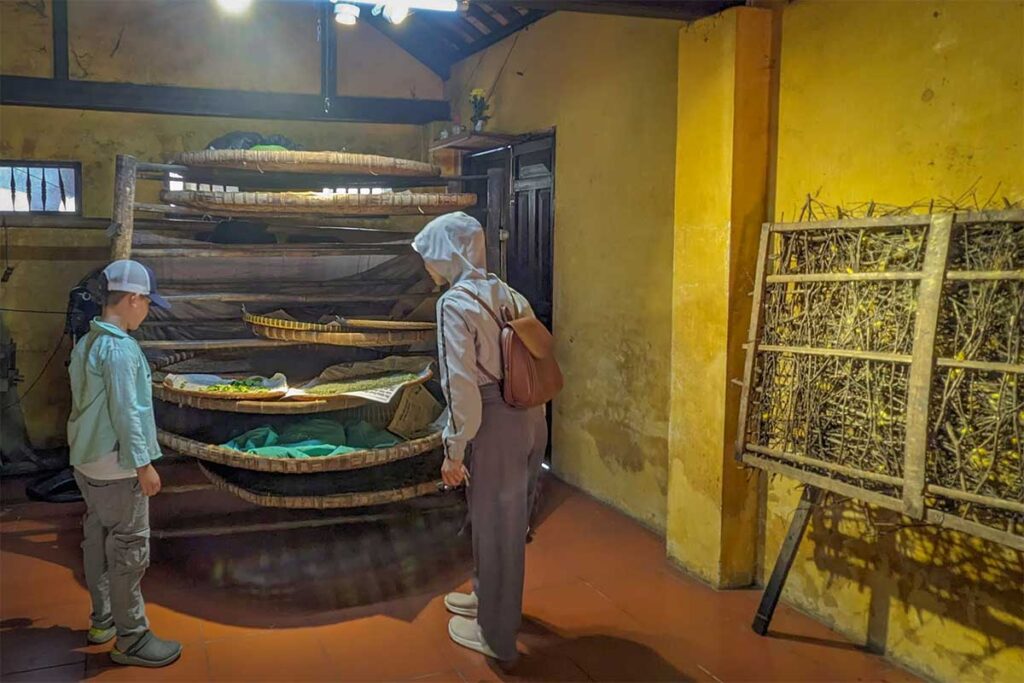
The village was restored and developed by the Quang Nam Silk Company as a way to preserve this heritage and introduce it to a wider audience. While it’s not an authentic village where locals still weave at home, it’s designed specifically for travelers who want to understand Vietnam’s silk-making legacy in an engaging and well-organized way.
The history of silk in Hoi An
Silk was once a key pillar of Hoi An’s economy, helping the town flourish as a major port on the Maritime Silk Road from the 16th to 18th centuries. Nearby villages like Ma Chau specialized in weaving, supplying fine silk that was traded with merchants from Japan, China, and later Europe. This high-value fabric was prized for its quality and helped position Hoi An as a hub of cross-cultural exchange. While large-scale production has faded, silk remains part of the town’s identity — now mostly seen in tailor shops that continue the tradition of custom-made clothing using Vietnamese silk.
Things to see and do at Hoi An Silk Village
Hoi An Silk Village offers more than just a silk-making tour — it’s a small cultural complex where you can learn, explore, shop, and relax. Here’s what you can do there:
1. Visit the traditional Tuong house
The tour usually begins in a wooden “ruong” house — a traditional central Vietnamese home with timber pillars, an open structure, and curved roof beams. Inside, you’ll find a small shrine to Doan Thi Ngoc, a historical figure credited with introducing Hoi An silk to international trade. Your guide may also share background about ancient weaving communities and the Silk Road.
2. See the Ao Dai & Ethnic costume exhibition

One of the most photogenic areas is the exhibition of Vietnamese Ao Dai and traditional garments from 54 ethnic groups. Around 100 outfits are displayed, offering a visual introduction to Vietnam’s cultural diversity. It’s not a museum, but still an interesting stop to understand regional identity through clothing.
3. Watch the silk-making process
This is the heart of the visit. You’ll walk through different stations showing each step — from mulberry cultivation to silkworm rearing, cocoon boiling, and finally spinning and weaving silk on wooden looms.
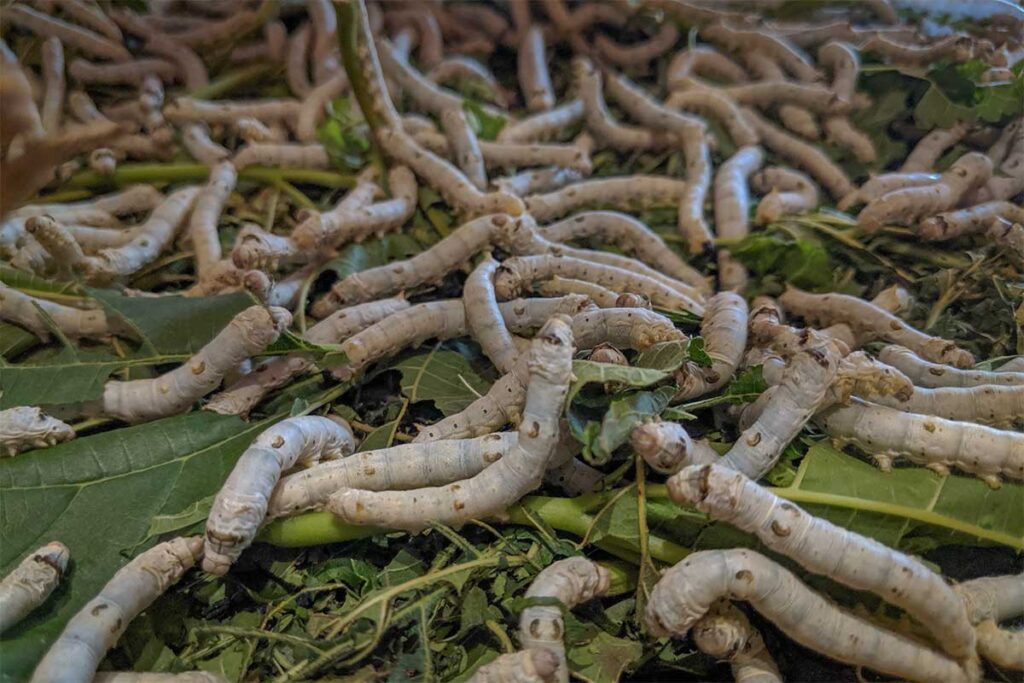

Everything is demonstrated in real time, and you can try touching raw cocoons or watch how the threads are dyed and stretched. The guides explain it clearly, with options to ask questions.
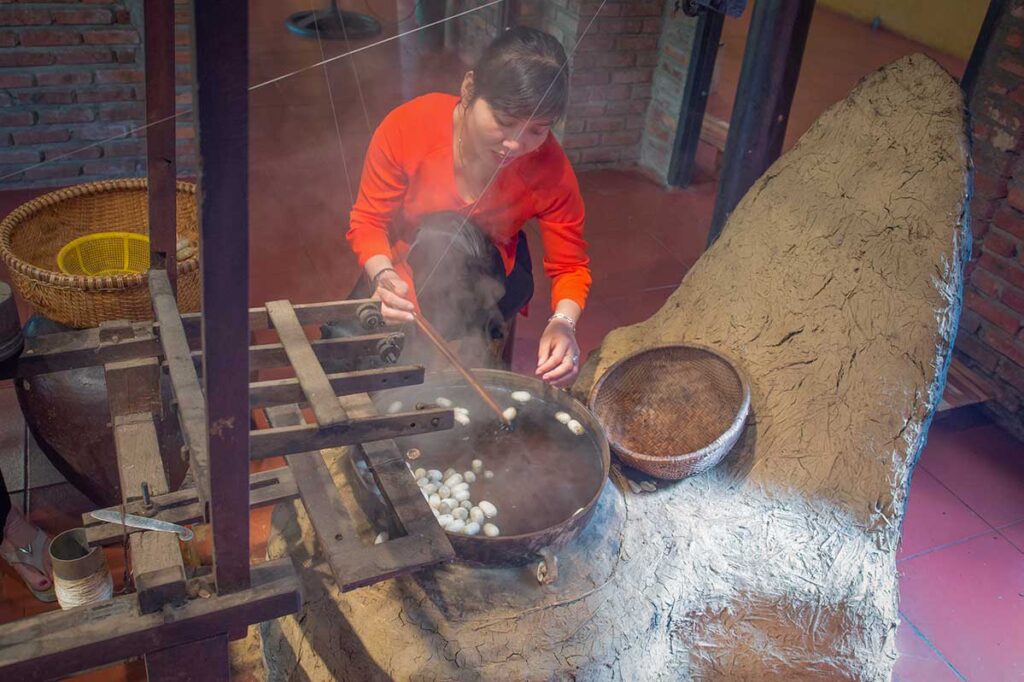
This section includes a short test to recognize real silk, often using a flame or fabric comparison — helpful if you plan to shop for silk elsewhere in Hoi An.

4. Shop for Silk Products
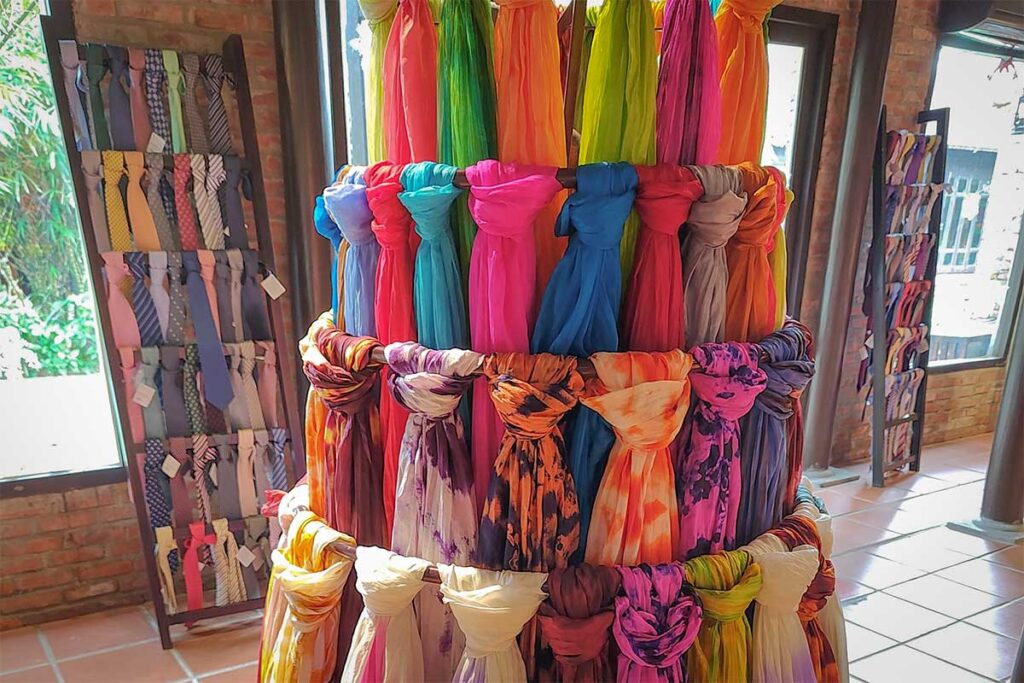
At the end of the tour, you’ll enter a showroom with silk products: scarves, fabric rolls, Ao Dai, ties, robes, and more. Everything is made from real silk and produced locally. The quality is high, but what makes this place better than most tailors is that you won’t be pressured to buy. Many visitors leave with a small gift or souvenir, but it’s perfectly fine to just browse.
5. Join a Workshop (Optional Add-On)
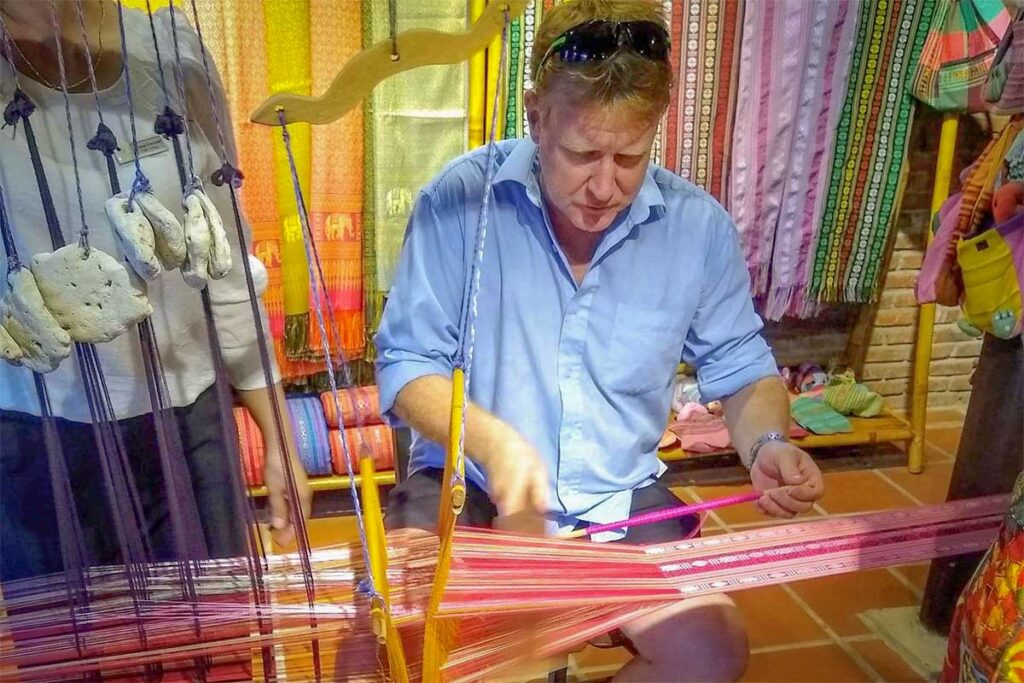
You can take part in a short weaving or lantern-making workshop. Weaving workshops are hands-on and usually led by local artisans who’ll guide you through creating a small silk pattern. Lantern-making is also available (for an extra fee), and it’s a simple but engaging craft — great if you’re traveling with kids.
6. Enjoy mulberry juice or Buffet dining
A glass of fresh mulberry juice is often included in the entrance fee — served when you arrive or after the tour. If you opt for the longer tour, you can enjoy a Vietnamese buffet at the on-site restaurant, set in a pleasant garden space. The food includes local specialties like Mi Quang, Cao Lau, and seasonal dishes. It’s a nice way to end the visit without needing to find a place to eat afterward.
Silk-making process: What you’ll learn
A guided tour at Hoi An Silk Village walks you through every step of the traditional silk-making process. You’ll start in the mulberry garden, where silkworms feed on fresh leaves. Then see how they spin cocoons, which are boiled to extract fine silk threads.
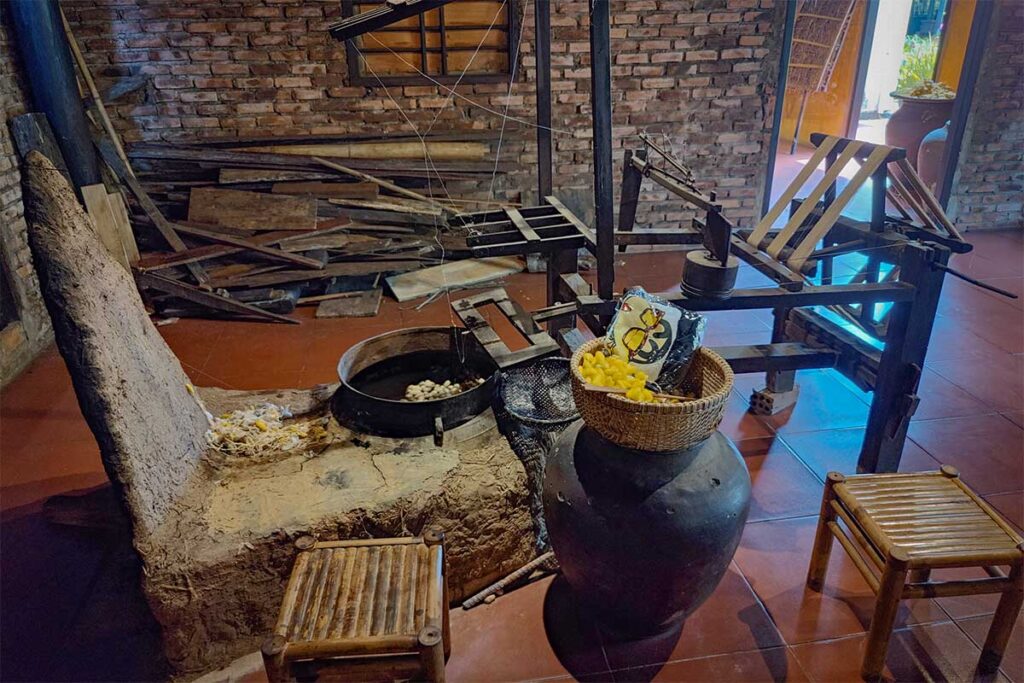
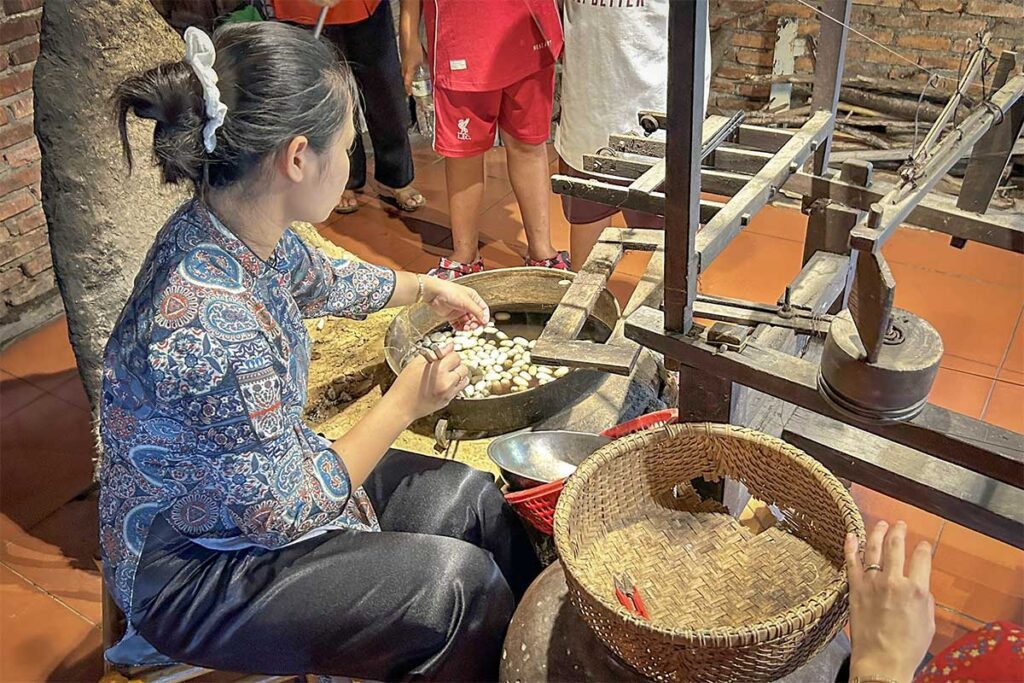
From there, the process continues with reeling, spinning, dyeing, and weaving — all demonstrated on traditional looms using wooden tools and age-old methods. One highlight is learning how to spot real vs. synthetic silk using a simple flame test — a practical skill for shopping in Hoi An’s tailors.
This hands-on look at the life cycle of silk offers a deeper appreciation for the effort behind each piece of fabric.
Tour options & Entry fees
Hoi An Silk Village offers two main tour formats — one short and one extended — plus optional craft workshops like lantern making. All are suitable for individuals, couples, or families.
Quick Tour – 100,000 VND (~45 minutes)
This is the most popular option. It includes:
- A guided walk through the mulberry garden, silkworm room, spinning area, and loom demonstrations.
- A short explanation of the silk production process from worm to weaving.
- Tips on how to tell real vs fake silk.
- Free glass of mulberry tea.
Extended Tour – 560,000 VND (~4 hours)
This longer experience includes:
- A more in-depth tour of all silk-making stages.
- A hands-on workshop where you can try weaving with a traditional loom.
- A Vietnamese lunch buffet in the on-site restaurant.
- More time to interact with staff, ask questions, and browse products at your own pace.

Lantern Making – ~150,000 VND
Offered as a separate or add-on activity. You’ll:
- Make your own small silk lantern using pre-cut materials.
- Get guidance from staff (no skill required).
- Take home a handmade souvenir.
Note: Simpler and smaller than other lantern workshops in Hoi An. More about the silk material than complex decoration.
Where it is & How to get there
Hoi An Silk Village is located at 28 Nguyen Tat Thanh Street, just about 1 kilometer from Hoi An Ancient Town. It’s easy to reach from anywhere in town, and the route is flat and straightforward.
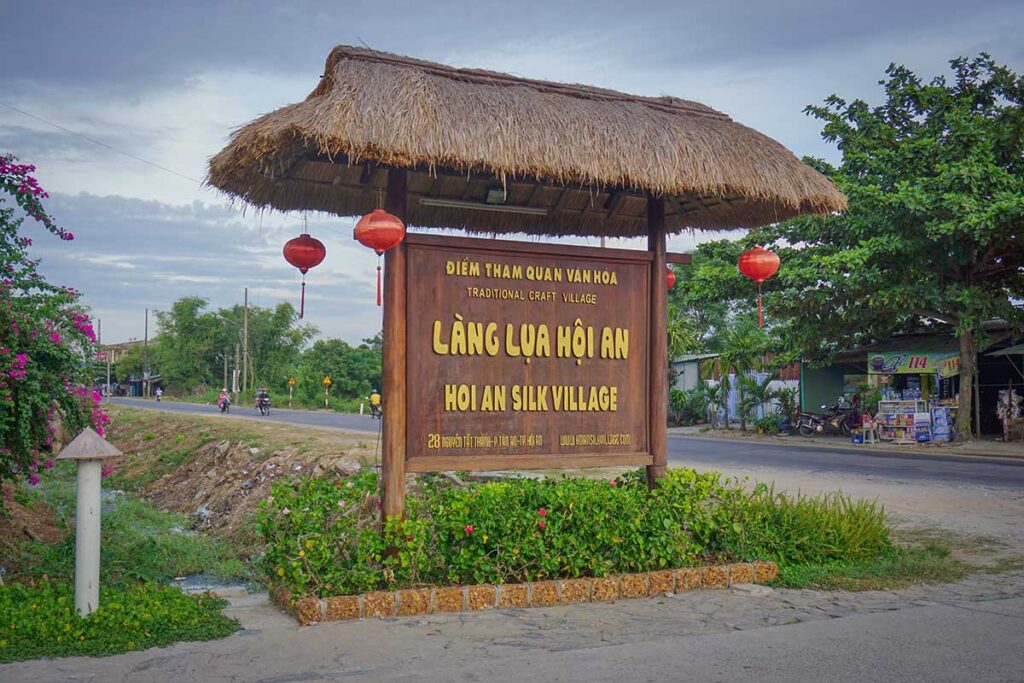
Transport options
- Walking: Around 15–20 minutes from the Old Town. A nice stroll if the weather is cool.
- Cyclo: A fun local option, especially if you’re staying in the Old Town.
- Bicycle: Ideal for those already exploring Hoi An by bike.
- Taxi or Grab: A quick 5-minute ride from anywhere central. Very affordable.
- Motorbike: Parking is available if you’re driving yourself.
Tip: Hoi An Ancient Town is nearby, so can easily combine a visit
Is Hoi An Silk Village worth visiting?
Yes — especially if you’re interested in culture, traditional crafts, or Vietnamese textiles. The village is just a short ride or walk from Hoi An Old Town, making it one of the most accessible cultural experiences in the area.
It’s well-suited for families, photographers, and travelers looking to learn or shop for high-quality silk in a relaxed, well-presented environment.
That said, it’s designed for visitors — not a fully authentic working village. You won’t see local families weaving at home or a bustling community, but you will get informative demonstrations, English-speaking guides, and hands-on options like weaving or lantern making.
With the right expectations, it’s a rewarding visit — more about learning, interaction, and supporting local heritage than exploring rural life.
Tip: Ma Chau Silk Village
While Hoi An Silk Village is the most accessible option for travelers, Ma Chau Silk Village in Quang Nam has a much longer history — over 600 years of traditional silk weaving.
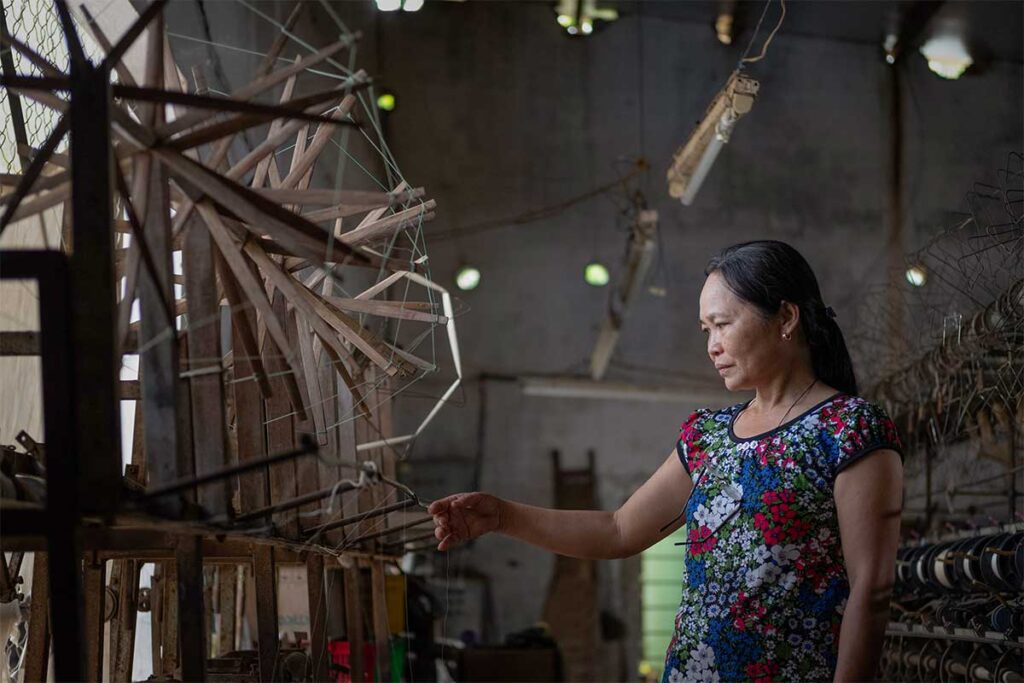
Ma Chau was once one of the most important silk-producing villages in central Vietnam. It supplied silk for trade and supported the region’s textile industry, especially during Hoi An’s days as a major port. Today, the craft is still alive, but the village is not set up for tourism.
There’s one small visitor workshop you can stop by, but don’t expect tours, signage, or facilities. It’s located further inland near Tam Ky, and difficult to reach without your own transport or a guide.
In short: Ma Chau is a living silk village, not a tourist attraction. It’s worth knowing about for context — but Hoi An Silk Village remains the better choice for most travelers looking to learn about silk and see the process up close.



